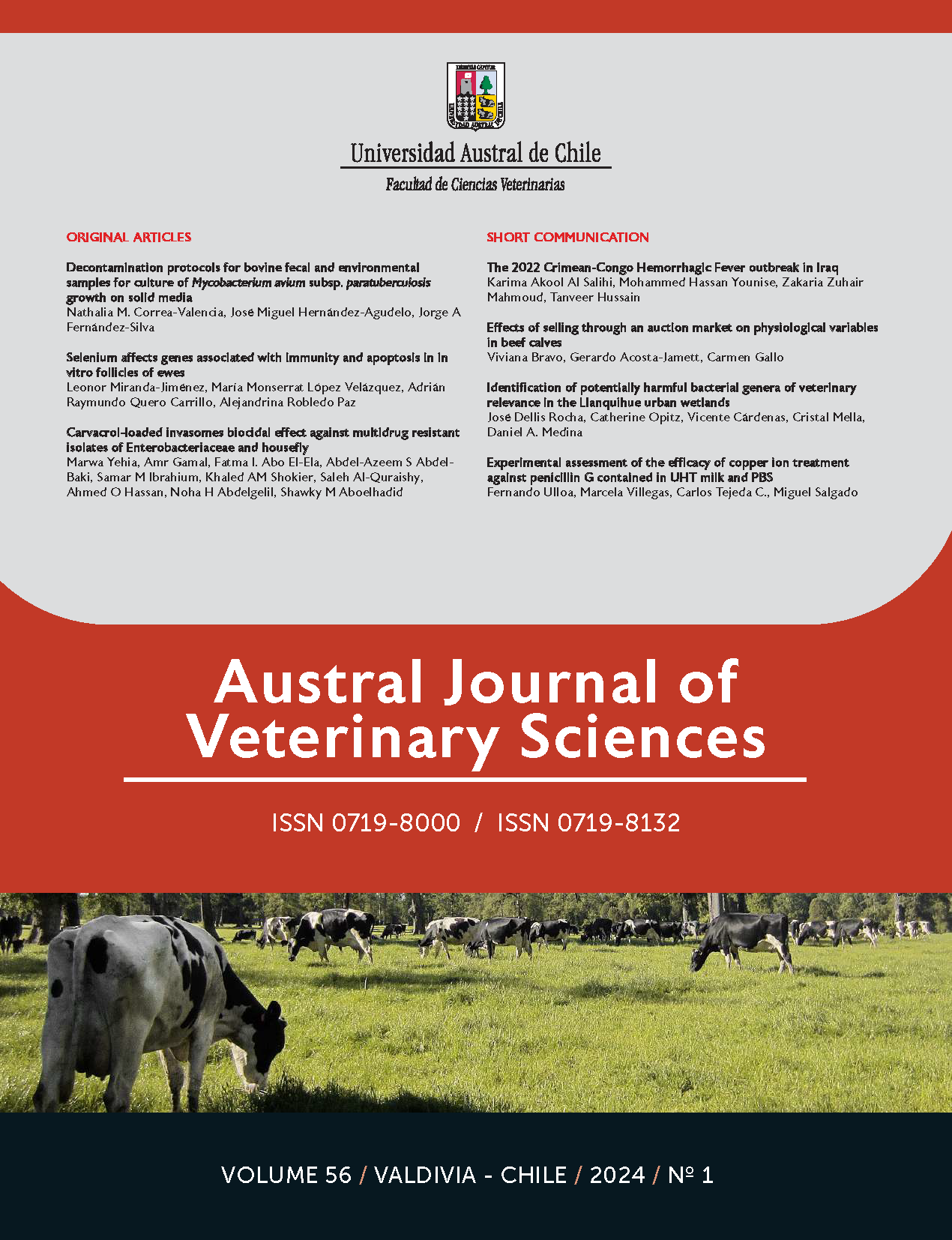Experimental assessment of the efficacy of copper ion treatment against penicillin G contained in UHT milk and PBS
Contenido principal del artículo
Resumen
Antibiotics are widely used in animal production to treat bacterial infections and to improve performance and animal welfare. Their misuse poses a threat to public and animal health because of the possible development of antibiotic-resistant microorganisms. Among the many strategies that have been considered to address this problem are methods to degrade antibiotic residues, especially those from the human and animal food chain. This study describes the effect of copper ion treatment on the detection of penicillin G in a liquid matrix. An in vitro experimental study was designed using both commercial milk and PBS spiked with three different concentrations of penicillin G. Each sample was treated for 30 min with copper ions. All samples were tested for antibiotics before and after treatment using a commercial enzyme-linked receptor binding assay. Additionally, pH, copper concentration, and temperature were evaluated. Antibiotic residues were detected in all spiked PBS and milk samples before treatment with copper ions. However, after 30 min of treatment, no antibiotic residues were detected in any sample at any concentration tested. In conclusion, treatment of penicillin-contaminated milk and PBS samples with copper ions affects antibiotic detection, which would potentially reduce antibiotic levels.


 https://orcid.org/0000-0002-6758-7067
https://orcid.org/0000-0002-6758-7067